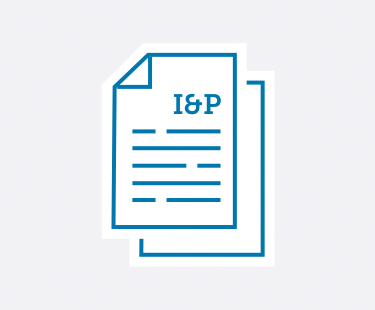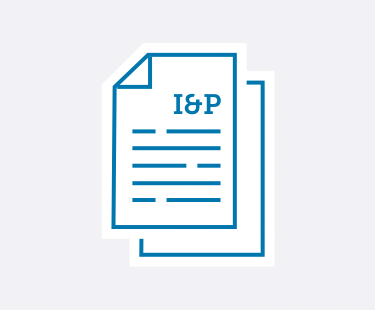

Learn practical strategies to handle emerging trends and leadership challenges in private schools.
No matter if you’re a School Head, Admission Director, Development Director, Board member, or any other private school administrator—Ideas & Perspectives®, ISM’s premier private school publication, has strategic solutions for the pervasive problems you face.
- Tuition not keeping pace with your expenses? In I&P, explore how to use strategic financial planning to create your budget and appropriately adjust your tuition.
- Enrollment dropping off? Discover how to implement the right admission and enrollment management strategies that engage your community—and fill your classrooms.
- Trouble retaining teachers? Learn how you can best support your teachers using ISM’s Comprehensive Faculty Development framework. Your faculty members will become more enthusiastic about their roles—which ultimately improves student outcomes.
- Fundraising campaigns not as successful as you’d hoped? Implement ISM’s practical advice and guidance to build a thriving annual fund, construct an effective capital campaign, and secure major donors—no matter your community size or location.
- Not sure how to provide professional development—for you and your staff? Learn ways to develop and fund a successful professional development strategy. You can improve teacher-centered satisfaction and growth, which in turn strengthens student-centered learning.
- Problematic schedule? You can master the challenges of scheduling with the help of ISM’s practical advice, based on our experience with hundreds of schools and our time-tested theories.
- And so much more.
I&P has shared targeted research, up-to-date insight, and sound theory with school leaders since 1975. More than 8,500 private school decision-makers find the answers to their schools’ administrative and governance matters in our advisory letter. We give you the strategic answers you need.
As an ISM Silver or Gold member, you not only receive issues online and in print 10 times a year, but you have access to 900+ articles in our web archive. Need help? It’s at your fingertips! Learn more and sign up for ISM's membership here.
Search
See the articles from our latest issue of Ideas & Perspectives.
The ISM 37-School Parent Survey: Convenience Factors at Private-Independent Schools
Volume 34 No. 2 // March 25, 2009
In a previous issue of I&P, we discussed portions of the results of a survey of parents at 37 private-independent schools in the United States. The demographics and income information presented there set the stage for this article on the importance of various convenience factors and the need for "full-service" schools.
1. Already a member? Click here to login.
2. Not a member? Click here to become a member.
3. Not sure? We'll help you figure it out.
Reducing Insurance Costs: Employee Benefits
Volume 34 No. 3 // March 25, 2009
Although some schools believe they're already seeing some early effects of the current economic climate, it is not yet clear what the ultimate direct or indirect impact may be on private-independent schools. It is prudent, however, to take steps now to reduce costs. To start, look at your largest line-item expenses. For most schools, closely following salaries, the cost of insurance is the largest single expense. There are ways to reduce the cost of employee benefits and property and casualty insurance while maintaining the core integrity and intent of the insurance.
1. Already a member? Click here to login.
2. Not a member? Click here to become a member.
3. Not sure? We'll help you figure it out.
Family Satisfaction and Retention in the Current Economic Climate
Volume 34 No. 4 // March 25, 2009
ISM recently conducted a nationwide survey with parents of private-independent school students. There were 13,291 responses—92% from parents with children in a day school, 4% with one (or more) in a boarding school, and 4% who did not identify the type of school their children attend. This survey primarily addressed school concerns about the current economic climate and the potential effect on re-enrollment.
1. Already a member? Click here to login.
2. Not a member? Click here to become a member.
3. Not sure? We'll help you figure it out.
Family Medical Leave Act (FMLA): Updates and Reminders for Private-Independent Schools
Volume 33 No. 16 // December 22, 2008
Since it was enacted in 1993, the federal Family Medical Leave Act (FMLA) has offered important benefits to eligible employees in need of time off for serious personal and family medical issues, while at the same time presenting challenges to employers in administering the law properly. The law includes certain provisions specific to schools that many may still be unaware of. We are taking this opportunity to review the law and its application to private schools nationwide—as well as considering certain state-specific issues together with the impact of a recent update and expansion of the law concerning military families. (Summary of FMLA Update)
1. Already a member? Click here to login.
2. Not a member? Click here to become a member.
3. Not sure? We'll help you figure it out.
Admission Office Reports to the School Head
Volume 33 No. 16 // December 22, 2008
Given the effect on your school’s operating budget, the Board has a vital interest in enrollment numbers. The School Head has assigned you, the Admission Director, the task of providing him/her a clear, concise report—perhaps on a monthly basis—concerning the status of enrollment at your school. Your information will prepare the Head for making direct reports to the full Board at certain times (e.g., re-enrollment season) and at most other times reporting through the Head Support and Evaluation Committee (HSEC).
1. Already a member? Click here to login.
2. Not a member? Click here to become a member.
3. Not sure? We'll help you figure it out.
Marketing Your School During an Economic Downturn
Volume 33 No. 16 // December 22, 2008
In a recent issue of I&P, ISM provided a historical perspective about past economic downturns and the amount of time that passed before the economy recovered. In addition, the article provided information about the enrollment, tuition, and endowment experiences of 10 schools during the 1987 downturn. The issue also contained 10 dos and don’ts for schools to follow to ensure future stability.
1. Already a member? Click here to login.
2. Not a member? Click here to become a member.
3. Not sure? We'll help you figure it out.
ISM’s Standards for Professional Growth and Renewal: Content Standards
Volume 33 No. 15 // November 28, 2008
The ISM Standards for Professional Growth and Renewal provide private-independent schools with a way to assess whether their investment in faculty professional development is focused on students, articulated as a systems activity, contextually meaningful in building professional relationships among faculty, and accountable for the results achieved. This article, the last in the series, recommends a set of metrics related to the Content Standards.
1. Already a member? Click here to login.
2. Not a member? Click here to become a member.
3. Not sure? We'll help you figure it out.
Administrative Cost-Effectiveness and Your Market Platform
Volume 33 No. 15 // November 28, 2008
ISM uses a tripartite classification for examining a private-independent school’s marketing platform: price-value: We offer a transformational (nearly always religious) experience for your child at a cost you can afford; product: We offer the best academic "product" (graduate) in our market area; or process: We offer "more" for your child (more electives; more levels of electives; more teams; more levels of teams; more individual attention, and/or a unique pedagogy) than others in our market.
1. Already a member? Click here to login.
2. Not a member? Click here to become a member.
3. Not sure? We'll help you figure it out.
Hard Economic Times: Do's and Don’ts for Private-Independent Schools
Volume 33 No. 14 // November 1, 2008
The international economic crisis is, we are reliably told, unprecedented—and it may be far from over. With this in mind, what useful framework of "dos" and "don’ts" might be entertained by private-independent school leaders?
1. Already a member? Click here to login.
2. Not a member? Click here to become a member.
3. Not sure? We'll help you figure it out.
Don’t Panic! Sustain Your School During Economic Downturns
Volume 33 No. 14 // November 1, 2008
The subprime mortgage crisis in the United States reached a critical stage in September 2008, forcing the federal government to take measures to stave off a potential economic collapse by enacting the Emergency Economic Stabilization Act of 2008, a bailout of the U.S. financial system, on October 3, 2008. This situation in the U.S., linked with similar weaknesses in some other countries, has disrupted the global economy. The ramifications of the downturn may or may not be experienced for years--economists are far from agreement. As John Kenneth Galbraith said, "The only function of economic forecasting is to make astrology look respectable."
1. Already a member? Click here to login.
2. Not a member? Click here to become a member.
3. Not sure? We'll help you figure it out.


